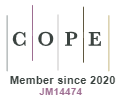Satisfaction of Managers Lead to Maturity in Project Management? A Case Study in Serpro
DOI:
https://doi.org/10.5585/gep.v2i1.29Keywords:
Project Management Software, Organizational Maturity, Assessment of Information Systems, User SatisfactionAbstract
This article is an evaluation system of project management software in SERPRO - Serviço Federalde Processamento de Dados, based on the perception of 271 professionals working in eleven statesin the country, playing leading roles in software projects. The system of project managementsoftware of the SERPRO was evaluated from two dimensions: (a) the technological tool itself, and(b) organizational maturity in project management. For the evaluation tool, we used a construct of11 variables and an equal number of indicators. In assessing to evaluate the maturity, it was using adifferent construct with 7 variables and 21 related indicators. The intensity with which the subjectsmanifested on these two dimensions were measured on a Likert scale, ranging from 1 to 7. Theresults showed that both the computer system and the organizational maturity in projectmanagement were slightly higher than the average assessment of the scale, demonstrating that thereis room for improvement in those two dimensions. The stratification of the sample into two groups,the subjects most satisfied with the system and the subjects less satisfied, revealed that the firstassess the organizational maturity significantly more positive than the last. This difference wasconfirmed by the U proof of Mann-Whitney, leading to infer the possibility of some correlationbetween the individual's satisfaction with the tool and the potential contribution it can make toincrease the organizational maturity of the institution.References
Adams, D. A.; Nelson, R. R.; and Todd, P. A. (1992). Perceived usefulness, ease of use and usage of information technology: a replication. MIS Quarterly, 16(2), 227-247.
http://dx.doi.org/10.2307/249577
Amoako-Gyampah, K. and Salam, A. F. (2004, July). An extension of the technology acceptance model in an ERP implementation environment. Information & Management, 41(6), 731-745.
http://dx.doi.org/10.1016/j.im.2003.08.010
Chin, W. W. and Lee, M. K. O. (2000, December) – On the formation of end-user computing satisfaction: a proposed model and measurement instrument. international conference on information systems (pp. 553-563). Proceedings of the 21st International Conference on Information Systems. Brisbane, Australia, 10-13.
Davis, F. D. (1989, September). Perceived usefulness, perceived ease of use, and user acceptance of information technology. MIS Quarterly, 13(3), 319-340.
http://dx.doi.org/10.2307/249008
Dinsmore, P. C. (1999). Transformando estratégias empresariais através da gerência por projetos. Rio de Janeiro: Qualitymark.
Doll, W. J. and Torkzadeh, G. (1988). The measurement of end-user computing satisfaction. MIS Quarterly, 12(2), 259–274.
Fincher, A. and Levin, G. (1997). Project management maturity model. Chicago: Project Management Institute.
Hair, J. F., Jr.; Anderson, R. E.; Tatham, R. L.; and Black, W. C. (2005). Multivariate data analysis (5th ed.). New Jersey: Prentice Hall.
Hartman, F. T. and Skulmoski, G. (1998). Project management maturity. Project Management Journal, [S.l.], 4(1), 74-78.
Hendrickson, A. R.; Massey, P. D.; and Cronan, T. P. (1993, June). On the test-retest reliability of perceived usefulness and perceived ease of use scale. MIS Quarterly, 17, 227-230.
http://dx.doi.org/10.2307/249803
Maçada, A. C. G. e Borenstein, D. (2000, setembro). Medindo a satisfação dos usuários de um sistema de apoio à decisão. Anais do XXIV Encontro Nacional da Associação Nacional de Pós-Graduação e Pesquisa em Administração – EnAnpad, Florianópolis, SC, Brasil.
Mahmood, M. A.; Burn, J. M.; Gemoets, L. A.; and Jacquez, C. (2000). Variables affecting information technology end-user satisfaction: a meta-analysis of the empirical literature. International Journal Human-Computer Studies, 52, 751-771.
http://dx.doi.org/10.1006/ijhc.1999.0353
Okeef, R. M.; Balci, O.; and Smith, E. P. (1987). Validating expert system performance. IEEE Expert, [S.l.], 2, 8.090.
Project Management Institute. (2003). Organizational Project Management Maturity Model (OPM3): Knowledge Foundation. Newtown Square, PA, USA: Project Management Institute.
Rios, L. R.; Maçadas, A. C. e Lunardi, G. L. (2006, agosto). Medindo a satisfação do usuário final de um sistema Business-to-Business. Anais do IX Simpósio de Administração da Produção, Logística e Operações Internacionais, São Paulo, SP, Brasil, 29-31.
Segars, A. H. and Grover, V. (1993). Re-examining perceived ease of use and usefulnes: a confirmatory factor analysis. MIS Quarterly, 17, 517-525.
http://dx.doi.org/10.2307/249590
Software Engineering Institute. (2002). Capability Maturity Model Integration (CMMI). Pittsburg, PA, USA: Carnegie Mellon Software Engineering Institute.
Venkatesh, V. and Davis, F. D. (2000, February). A theoretical extension of the technology acceptance model: four longitudinal field studies. Management Science, 46(2), 186-204.
http://dx.doi.org/10.1287/mnsc.46.2.186.11926
Venkatesh, V.; Morris, M. G.; Davis, G. B.; Davis, and Fred D. (2003, September). User acceptance of information technology: toward a unified view. MIS Quarterly, 27(3), 425-478.
Downloads
Published
How to Cite
Issue
Section
- Abstract 169
- PDF (Português (Brasil)) 142






